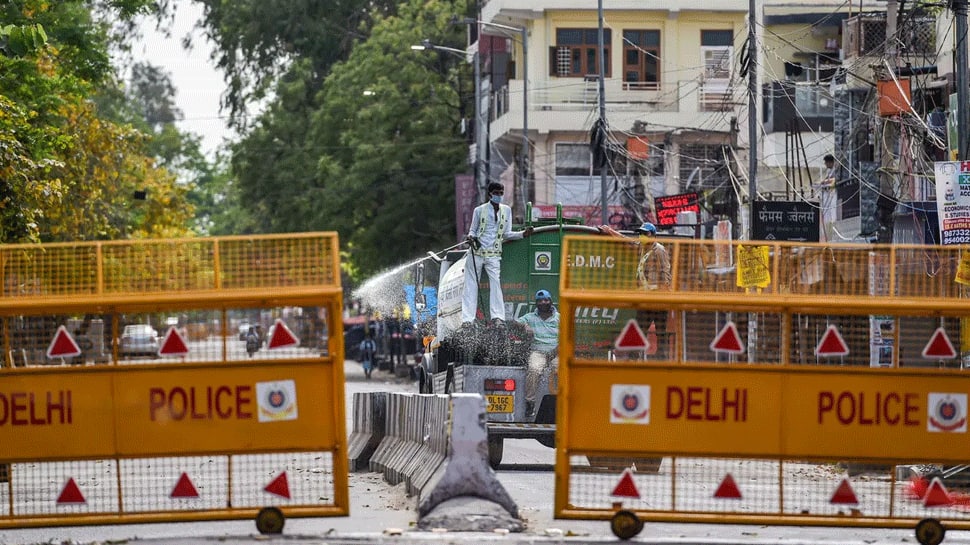NEW DELHI: Despite an unprecedented rise in coronavirus cases, the COVID-19 recovery rate in Delhi stands near 75%.
According to Delhi Heath Department, 82,226 people have recovered, almost four times the number of active cases which stand at 21,567. As many as 4,027 patients have recovered in the last 24 hours, taking the recovery rate to 74.57 per cent.
While COVID-19 has a 2-5% mortality rate across the world and, in the absence of a vaccine for this virus, it may not be possible to bring the mortality rate down to zero. However, proper patient and facility management can lead to a reduction of mortality and this is exactly the strategy that has been followed in Delhi.
The focus of the Delhi Government was on ensuring that the patients who had mild symptoms could recover at home, so that hospital facilities remained available for serious and critical patients.
A close watch was also kept on patients to ensure a swift transition to hospitals in case of escalating symptoms. The objective was to reduce deaths by preventing mild and moderate patients from becoming severe and preventing severe patients from getting into critical condition.
1. Oximeters and Oxygen Concentrators
One of the causes of mortality in COVID is a reduction in oxygen levels in the blood, hypoxia. Unlike other ailments where this hypoxia is accompanied with breathlessness, in COVID we witness a phenomenon of ‘Happy Hypoxia’, wherein a patient may have dangerously low levels of oxygen but may not have any awareness about it.
Monitoring oxygen levels and having an accessible supply of oxygen was crucial to prevent the mortality of patients in Home Isolation. Delhi Govt provided oximeters to all patients recovering in Home Isolation so they could monitor their oxygen levels to prevent any sudden falls.
Delhi government purchased 59,600 oximeters and 58,974 are in use today by patients in home isolation. Oxygen Concentrators were provided to local dispensaries who could immediately take these to a patient’s home and provide oxygen support if their oxygen levels began to dip. Delhi government purchased 2,750 oxygen concentrators. Most beds in Delhi government hospitals today have oxygen facilities.
2. War Room for Ambulance Management
It has been seen across the world that unnecessary mortality has been caused by an inability of the ambulance systems to keep pace with the spread of the pandemic. Delhi’s ambulance system has responded with speed to ensure that there is no shortage of ambulances as the city faced a surge of COVID cases and a dedicated war room was set up to ensure that every patient with escalating symptoms was able to reach the hospital in time.
Starting with only 134 ambulances at the beginning of lockdown, Delhi government’s 102 CATS ambulance service currently operates a fleet of 602 vehicles, which includes 402 ambulances catering to both COVID and non-COVID cases, and 200 cabs that cater to non-emergency calls for ambulance service, example transfer of treated COVID patients back to their homes.
This was possible by expanding the in-house fleet of ambulances but also collaborating with private ambulance providers and cab providers leveraging technology to coordinate dispatch and manage the performance of ambulances.
Protocols were worked out with each hospital so that COVID patients are admitted to hospitals within 15 minutes of the arrival of ambulances. NGO partners were roped in
to provide detailed training sessions to ambulance drivers, paramedics and CATS control room staff taking calls to ensure they fully understood various COVID
symptoms and respond to each case as per need. So the ambulance system ensured that any patients with severe symptoms reach hospitals before they become critical.
The impact is visible in the performance of the ambulance system over the last two months. In the first week of May, the CATS ambulances catered to an average of 576
calls a day with patient handover time of 4 hr 28 min per COVID call. In the first week of July, the CATS ambulance service catered to an average of 890 calls per day
with patient handover time of 2 hr 49 min per COVID call.
3. Plasma Therapy
Convalescent plasma has shown encouraging results across the world in preventing mortality amongst critical patients, as it provides the patient with antibodies to fight
the virus. Delhi was the first to start an experimental trial of plasma therapy in LNJP, the largest Delhi Government COVID-19 facility. Trial results were very encouraging. Plasma therapy could save some lives until a vaccine was available. In a first, across the country, a ‘Plasma Bank’ has been set up by the Delhi Government, so that patients can easily access convalescent plasma. An aggressive awareness campaign for plasma donation has been led by the Chief Minister himself, so as to encourage recovered patients to come forward and donate their plasma.
It may be noted that on June 23, the city had witnessed the highest single-day peak of 3,947 cases, but the number has now come down steadily since then despite the number of tests increasing. Testing numbers in the city have also gone up since the commencement of rapid antigen tests last month. Over 9,719 RT-PCR and 12,570 rapid antigen Covid-19 tests were conducted on Thursday.
In total, 7,24,148 tests have been conducted so far in the national capital. Delhi has a total of 563 containment zones. On Wednesday, the city had 458 zones.
Currently, 4,784 beds are occupied in the hospitals out of a total capacity of 15,096 beds, 1,918 in the dedicated Covid Care Centres out of 7,869 and 135 beds in the dedicated Covid Health Centres as against the availability of 544 total beds. Over 12,543 people are under home isolation.
An order was issued to all hospitals for nominating a nodal officer for the sake of coordination, requisition, and issuance of convalescent plasma from `Delhi Plasma Bank` at the Institute of Liver and Biliary Sciences.
















